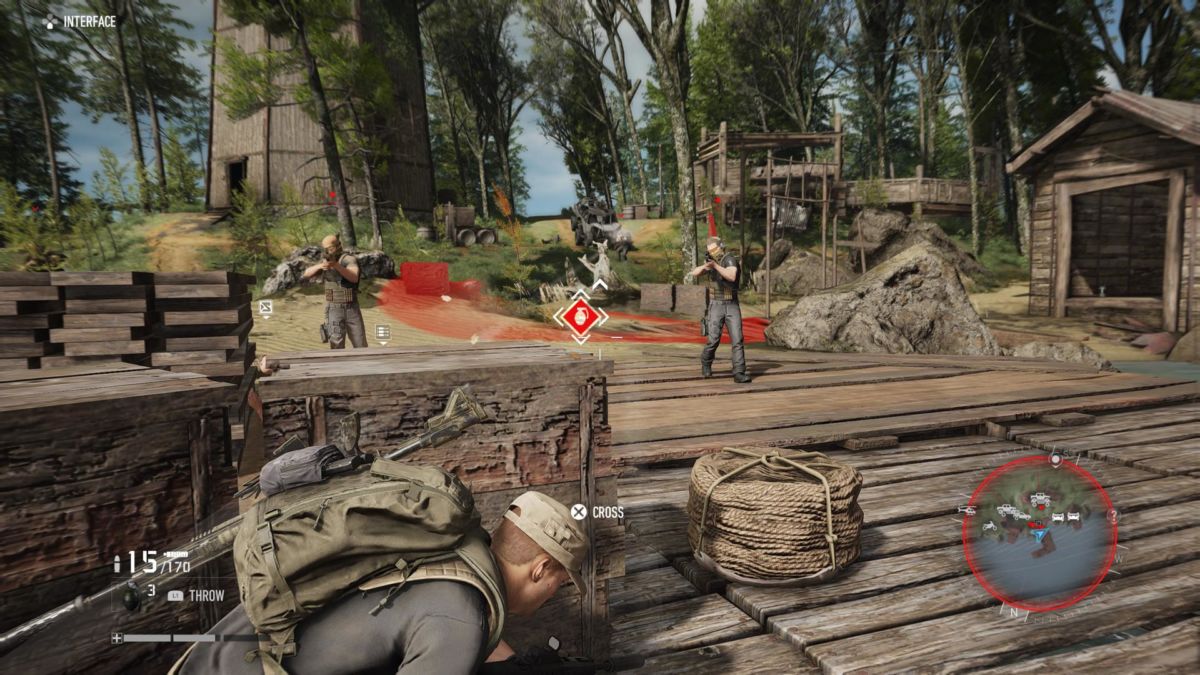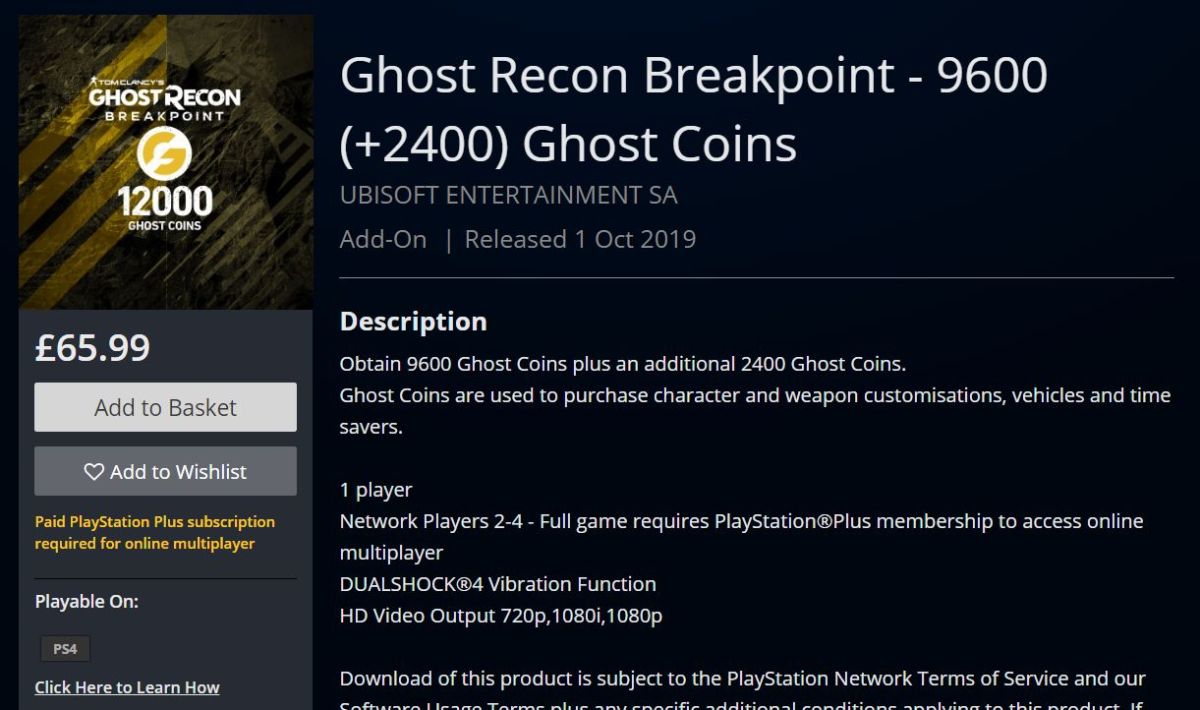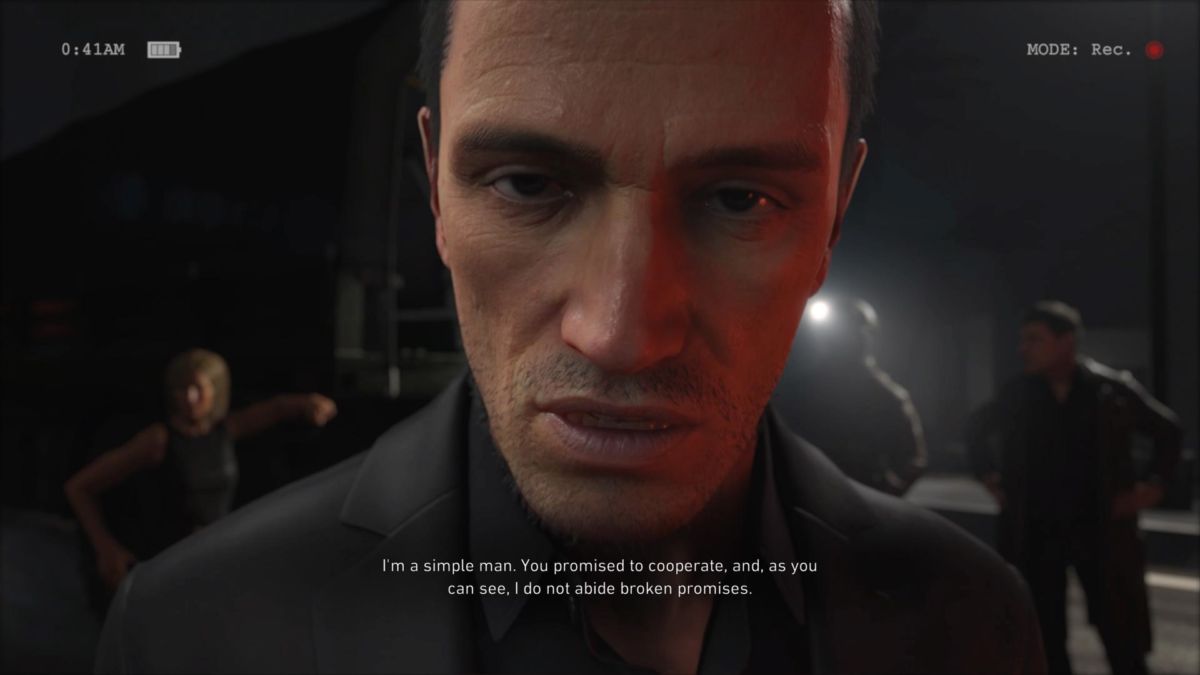
Ghost Recon Breakpoint is a bit all over the place. At times, it’s incredibly fun, with a compelling story and gorgeous environments to explore. At others, it’s full of pace-killing bugs, glitches and so, so many microtransactions. It makes it a challenge to put my finger on as to whether I’m enjoying Breakpoint or just getting through it.
With this entry, much is the same as other open-world Ubisoft titles: explore a vast environment while completing various missions and side missions as you level up your character and weaponry. It’s a dependable formula although a bit too familiar, making it hard to become too enthusiastic about Breakpoint, despite a strong story with some stellar performances.
You once again take control of Nomad, the gruff-voiced grunting leader of the Ghosts, sent out to the island of Auroa to investigate the sinking of a US cargo ship. The Ghosts are soon ambushed by a swarm of drones, crashing onto the island. With Nomad as the only survivor, and his ghost buddies missing/injured, he learns former Ghost Cole D. Walker (Jon Bernthal) has taken control of a private military known as Sentinel. Not only this, but Walker has also built up his squad of ‘Wolves’, hunting down all surviving Ghosts.
Auroa itself is just plain stunning, and you can see massive attention has gone into making the island feel as vast and distinct as possible. There are wide-spanning woodlands, snow-capped mountainous areas, swamps and many a tropical area, all fully accessible. Visually, it is incredible to behold, with much praise to be heaped on the lighting mechanics especially. After Ubisoft sparked some controversy with their depiction of Bolivia in 2017’s Wildlands, it makes sense to relocate to a fictitious land and fill it with geographical wonderment.
The opening hours of Breakpoint not only introduce you to Auroa, but steadily to the progression system and game mechanics as well. The first mission will take you to several crash sites, looking for survivors, and also allows for a little bit of exploration. Nomad will automatically pick up ammo, plants and medical supplies, which is a welcomed time saver. You still need to hold square to loot caches/crates and pick up collectables, though.
You’ll also get to grips with Breakpoint’s straightforward yet fairly basic skill tree. You choose from one of four classes (although you can switch after unlocking all four respectively), which will branch out to other skills that you can detail to your style. These range from ammo perks to stamina increases and just about everything in between. There’s scope to experiment, although I did lean towards more assault-based perks, only as my deluded attempts at stealth would often end in a bloodbath.
Along with this comes Breakpoint’s flexible mission system, meaning you can select any mission in any order, as well as the plethora of customisation and crafting options. There’s a lot to absorb from the outset, so don’t be surprised if it takes you awhile to pick it all up.
There is also an increased emphasis on realism this time around, which, for better or worse, was absent from Wildlands. Primarily, this comes in the form of damage and stamina. Now, sprinting about like a lunatic will deplete stamina and lead to exhaustion. Nomad will have to stop to build this back, or you can drink from your canteen, which can be refilled at water sources. Stamina is also dwindled by traversing down cliffs, though you will usually end up sliding down, sometimes in a comically similar fashion to Link plummeting down a hill in Breath of the Wild. At first, it can be something of a hindrance, but, with the right perks at your possession, you can largely negate the effects.
If you choose to focus on improving stamina perks, then this largely becomes inert. The likelihood of Nomad becoming exhausted is high and I don’t feel like there was much point even adding the mechanic in. I had to spend skill points to get around it, when I would rather put them in to improving gadgets or my ammo capacity. Honestly, it becomes annoying and makes me miss Wildlands’ freedom to just run around without being punished for it.
Damage is healed with a medical syringe, or by wrapping the wound with a bandage, of which you have an infinite amount. The extent of damage is flagged just under your health bar, be it minor or more serious, and can be seen as a real, physical impairment to Nomad. I found myself limping away, with a gaping hole in my shin. Honestly, that leg of mine has seen much better days and seems to be a magnet for bullets.
There is one other notable difference between Breakpoint and Wildlands – in single-player you are on your own, no longer flanked by three fellow computer-controlled Ghosts. If online, however, matchmaking will attempt to vary the classes in the team to reduce the risk of similar playstyles.
Breakpoint seems to emphasise survival and to fight against the odds, stripping you of the sense of teamwork and power the Ghosts had back in Wildlands. It fits in with the survivalist theme of the story, but, unless you are playing online co-op, robs Breakpoint of its core DNA. I wish there was the chance to have them with me much earlier in the game, but Breakpoint is adamant in making you slog it out on your lonesome. The solitude becomes especially frustrating when you are tackling Breakpoint’s many espionage/eliminate all enemies missions.
It gives a very different feeling to the game and means you’ll have to think twice as long about your best approach to any given scenario. You need to be considerate to your Ghost and refrain from charging into every battle headfirst. You will also need to take more time to collect plants and fruits in the environment, crafting recipes to boost Nomad and keep the Ghost leader in the game.
Ubisoft might want to give players the sense of conditions real soldiers endure when out in the field, but I don’t know if it’s needed here. At first, it was a neat feature but soon felt like more of a burden as the hours ticked past. I found myself wishing there was an option to turn the excessive realism off, and, at times, longing for the simplicity that was evident in Wildlands. Just because you can make a game realistic, it doesn’t mean that you should.
What Breakpoint does get (mostly) right, though, is the main story of Nomad and Walker. Jon Bernthal is on fantastic form as Walker, consistently entertaining and gripping as a man who is fighting against a system that has wronged him. Flashbacks with he and Nomad are highlights, although the voice acting elsewhere can’t quite match the standard set by the feuding pair. There are only so many times you can listen to NPCs rattle off the same three lines of dialogue before it becomes tedious. I also encountered some glitchiness in the sound design — especially in the cutscenes — when dialogue would cut out, and a character wouldn’t finish their sentences. It would be passable if it happened once or twice, but the fact it happened consistently meant I was frequently out of the moment, with much of the drama lost. Thank goodness for Breakpoint’s subtitles, or else I’d spend half the game second-guessing what I thought the characters said.
One of Breakpoint’s most significant focus points is on its gear-based levelling system. By seeking out new weapons and gear, or purchasing them from the shop in the game’s hub, you will level up your gear score. This is a new addition from Wildlands, and although harmless enough, it is odd to see so many other online players jogging about when the story tries so hard to convince that you are alone.
It’s the main incentive to explore Auroa, searching for the chest icons dotted about on the mini-map. You’ll be pretty ferociously swapping gear in and out – honestly, I feel like I spent a good chunk of my time with Breakpoint doing this. A higher gear score means you are, quite literally, better equipped to tackle harder missions, with many missions sitting at a suggested level of 150.
While the progression loop does have addictive qualities, you won’t be attached to your kit when opening a crate will quickly render it obsolete. It’s also a chore selling and dismantling items, meaning you have to hold down the square/triangle button every time. It was a welcome feature of The Division 2, though confusingly absent here. Searching for improved gear and weapons is fine, but when you have to spend unnecessary time sifting through you inventory and taking your stock apart, it slows the pace of gameplay significantly. I can’t help but feel like this is all a bit superfluous, like Ubisoft could easily have made a friendlier system out of such a critical aspect of the game. Breakpoint doesn’t need it.
The menus are also something of a task to navigate, with almost too many tabs. Going from tab-to-tab feels like more of a chore than it has any right to be, and I still question now whether there needs to be so many options. What you will also find in the menu as well is Breakpoint’s in-game store. And microtransactions.
Oh, god, so damn many microtransactions.
This instalment of Ubisoft’s tactical shooter franchise, more than any other, has seen a significant emphasis on them. It has more or less dominated Breakpoint’s pre-release marketing with much controversy online. The sheer amount of items, ranging from weapons and attachments to vehicles, cosmetics and skill points is frankly absurd. Ubisoft have since removed many of these microtransactions temporarily, and we have covered this previously, but you can use in-game Skell Credits, or exchange your own money for Ghost Coins.
Ubisoft claims the feature helps newer players catch up with those who have more time served, but it’s just a shameless cash grab. The amount of items and bundles available is stupid. I still cannot understand why anyone would spend their money on Ghost Coins, especially when you have already forked out £50-60/$60-70 to own the game itself.
The ambition of Ubisoft’s greed, no matter how they attempt to dress it up, is frankly astounding.
About Those Microtransactions
Players can purchase Ghost Coins in Breakpoint to unlock certain items. Ubisoft will be re-adding “time savers” at a later date.
Prices range from 600 Ghost Coins for £3.99/$4.99 to 12000 Ghost Coins for £65.99/$79.99
Breakpoint also has a Season Pass for its first year on top of many different editions of the game.
Breakpoint also showcases the PvP Ghost War mode, which places you in team versus team games, ranging from eliminating your opposition to planting bombs with a variety of maps to choose from. You can carry over your loadout from the main game, although a deliberate mechanic in the matchmaking means that, despite your XP level, no-one will have any advantages.
I found the online to be one of Breakpoint’s standout features that kept me coming back for more. The action tended to be faster paced and, in my few hours in Ghost War, I experienced no issues with the servers and could always find a new game.
Ghost Recon Breakpoint, if taken at face value, is a fun game. Yes, it does feel very similar to other Ubisoft games in its progression system and looting, like Assassin’s Creed and The Division. Although sometimes tricky, the grinding aspect of Breakpoint is rewarding, probably because Ubisoft have largely perfected the system by now. The island of Auroa is stunning, and the story is gripping, with an exceptionally brilliant performance from the ever-wonderful Jon Bernthal (even if I wish he were in it more).
Even now, I still have tonnes left to unlock and explore, but the frequent bugginess I encounter hurts the allure. Additionally, the weapon upgrade system is flawed; given the number of new weapons you will find in a single playthrough, there is no point to improve it. The gear system, however, does have it its upsides, contributing to an addictive progression system.
Some of the coverage you find on Cultured Vultures contains affiliate links, which provide us with small commissions based on purchases made from visiting our site. We cover gaming news, movie reviews, wrestling and much more.















